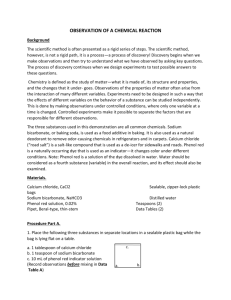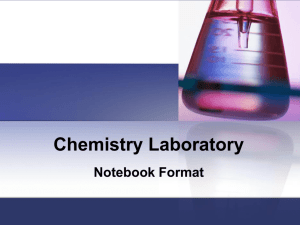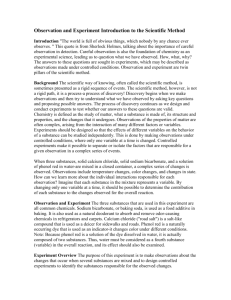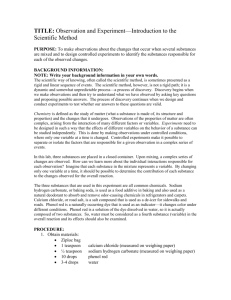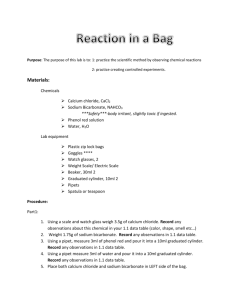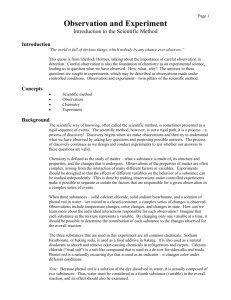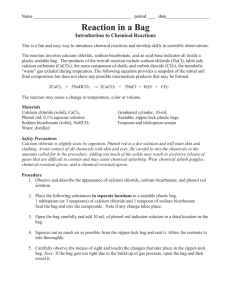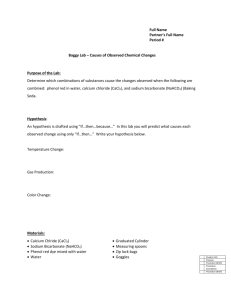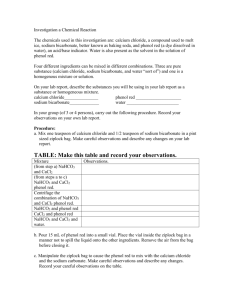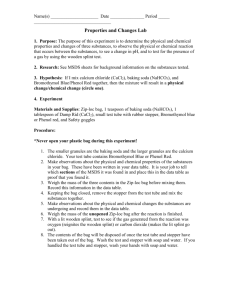01-Introduction to Scientific Method Lab
advertisement
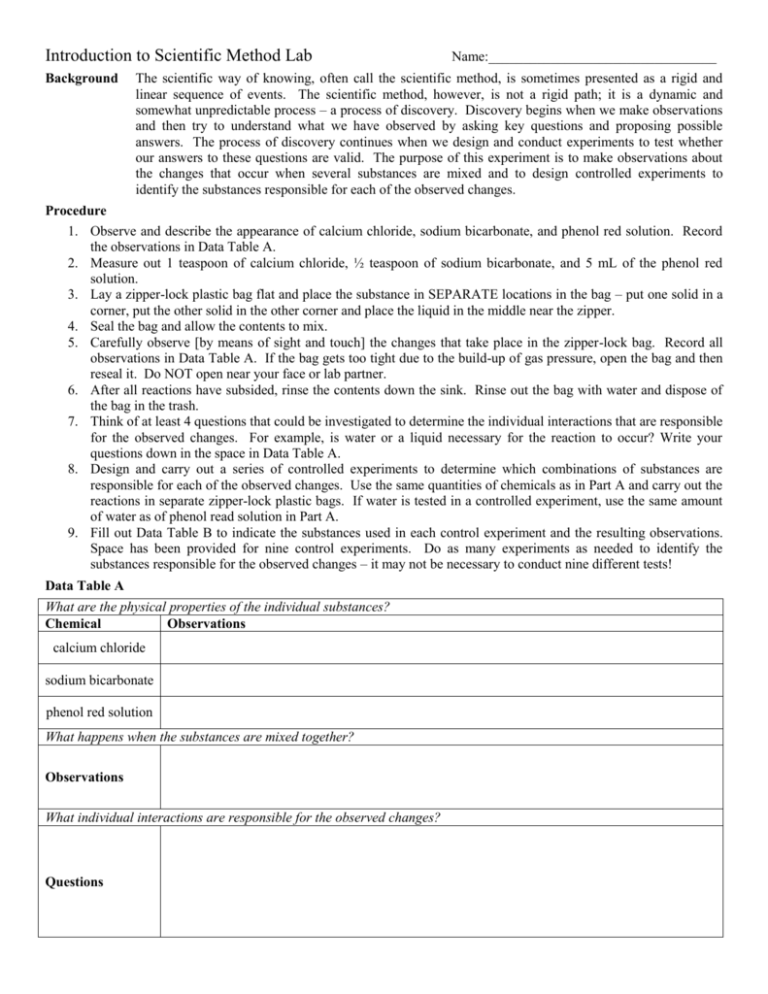
Introduction to Scientific Method Lab Background Name:_________________________________ The scientific way of knowing, often call the scientific method, is sometimes presented as a rigid and linear sequence of events. The scientific method, however, is not a rigid path; it is a dynamic and somewhat unpredictable process – a process of discovery. Discovery begins when we make observations and then try to understand what we have observed by asking key questions and proposing possible answers. The process of discovery continues when we design and conduct experiments to test whether our answers to these questions are valid. The purpose of this experiment is to make observations about the changes that occur when several substances are mixed and to design controlled experiments to identify the substances responsible for each of the observed changes. Procedure 1. Observe and describe the appearance of calcium chloride, sodium bicarbonate, and phenol red solution. Record the observations in Data Table A. 2. Measure out 1 teaspoon of calcium chloride, ½ teaspoon of sodium bicarbonate, and 5 mL of the phenol red solution. 3. Lay a zipper-lock plastic bag flat and place the substance in SEPARATE locations in the bag – put one solid in a corner, put the other solid in the other corner and place the liquid in the middle near the zipper. 4. Seal the bag and allow the contents to mix. 5. Carefully observe [by means of sight and touch] the changes that take place in the zipper-lock bag. Record all observations in Data Table A. If the bag gets too tight due to the build-up of gas pressure, open the bag and then reseal it. Do NOT open near your face or lab partner. 6. After all reactions have subsided, rinse the contents down the sink. Rinse out the bag with water and dispose of the bag in the trash. 7. Think of at least 4 questions that could be investigated to determine the individual interactions that are responsible for the observed changes. For example, is water or a liquid necessary for the reaction to occur? Write your questions down in the space in Data Table A. 8. Design and carry out a series of controlled experiments to determine which combinations of substances are responsible for each of the observed changes. Use the same quantities of chemicals as in Part A and carry out the reactions in separate zipper-lock plastic bags. If water is tested in a controlled experiment, use the same amount of water as of phenol read solution in Part A. 9. Fill out Data Table B to indicate the substances used in each control experiment and the resulting observations. Space has been provided for nine control experiments. Do as many experiments as needed to identify the substances responsible for the observed changes – it may not be necessary to conduct nine different tests! Data Table A What are the physical properties of the individual substances? Chemical Observations calcium chloride sodium bicarbonate phenol red solution What happens when the substances are mixed together? Observations What individual interactions are responsible for the observed changes? Questions Data Table B Calcium Sodium Phenol Water Observations Chloride Bicarbonate Red 1 2 3 4 5 6 7 8 9 Questions: Answer each of the following questions using a complete sentence. 1. Based on the results of the control experiments, what interaction among the substances seems to be responsible for the observed temperature change in the overall reaction? Use your data to support your response. 2. Was there a temperature effect observed in any of the individual control experiments that was NOT observed in the overall reaction of the substances? Explain. 3. Does the formation of gas bubbles occur independently of the observed temperature and color changes? Explain. 4. What control experiments were done to evaluate if a liquid is necessary for the observed effects? Does any reaction occur in the absences of water? 5. Is there any evidence that a new chemical substance is produced in the overall reaction of the substances mixed in the beginning? Explain. What interaction among the components must be responsible for the new substance?

